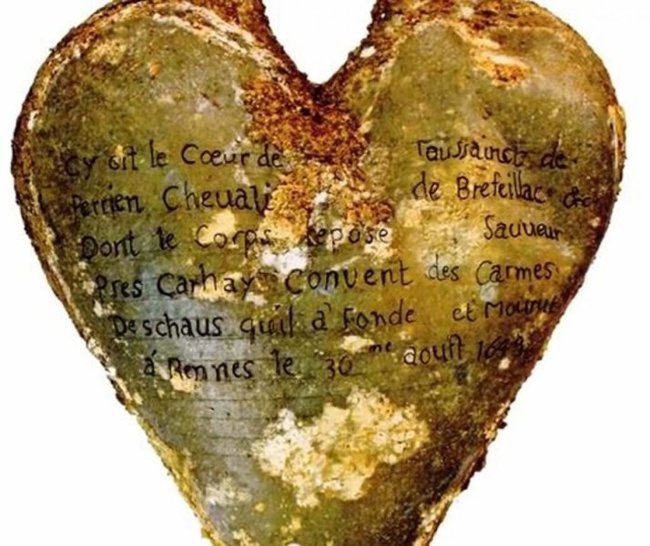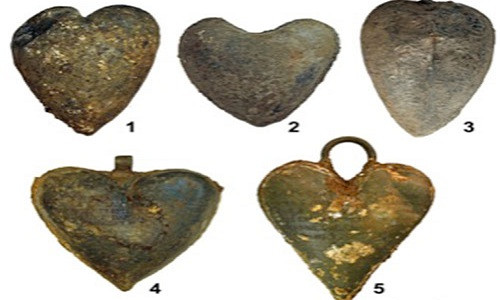The aromatic oil of the aristocratic family of the 16th century French
Five hearts were discovered in the burial cellar of a French noble family living in the 16th century with muscles cut off from the body and placed in a heart-shaped vase.
Discovered the reservoir of the oiled people in the monastery in France
Archaeologists at the Institute for Preventive Archaeological Research found hearts while excavating the basement of Jacobins monastery in Rennes, France.

Vase of the heart of Toussaint Perrien, Knight of Brefeillac.(Photo: RSNA).
Some graves that the research team found date back to the end of the 16th century to the early 17th century. Inside the burial chamber, they found 5 bottles of lead-shaped hearts, containing aromatic oils . A team of radiographers was invited to check the hearts to find out the health status of the bunker.
"We tried to review health information from aromatherapy hearts, but impregnated materials made it difficult for us," IB Times quoted Fatima-Zohra Mokrane, head of the group. research.
At first, magnetic resonance imaging and computerized tomography provided very little information about the health of the heart carrier. But after careful cleaning of the heart, scientists can identify structures such as heart chambers, heart valves and coronary arteries. Then they moistened the tissue to identify the heart muscle.

Five containers contain hearts inside.(Photo: RSNA).
A poorly preserved heart can be studied. However, the remaining 4 hearts provide a lot of health data. Three of them show signs of getting sick. The remaining heart seems to be quite healthy.
According to researchers, one of the hearts belongs to Toussaint Perrien, Knight of Brefeillac. His heart was removed from his chest and buried with his wife Louise de Quengo, Lady of Brefeillac.
"At that time, it was very common to bury the dead with the heart of a husband or wife. It is a romantic side in the burial practice of the ancients," Mokrane explained.
- The noble house also has rickets
- Mexico discovered 16th-century Mayan tombs
- The skeleton of the 16th century was stuffed with vampire bricks?
- Compare 16th century maps and satellite maps today
- Mona Lisa just gave birth to a child while modeling
- The truth of the death of the 16th century astronomy
- All of us are
- 'Dummy mole' on the face - courtship of 18th century ladies
- The house fly - voracious, dirty
- The heart of the 16th-century French queen was stolen
- Thailand develops fragrant rice resistant to insects and drought
- School for British nobility: Being like a fairy but suffering is more than a normal school
 Discovered an ancient centipede fossil 99 million years old
Discovered an ancient centipede fossil 99 million years old Discovered bat-like dinosaurs in China
Discovered bat-like dinosaurs in China Discovered a 200-year-old bronze cannon of the coast
Discovered a 200-year-old bronze cannon of the coast Discover 305 million-year-old spider fossils
Discover 305 million-year-old spider fossils